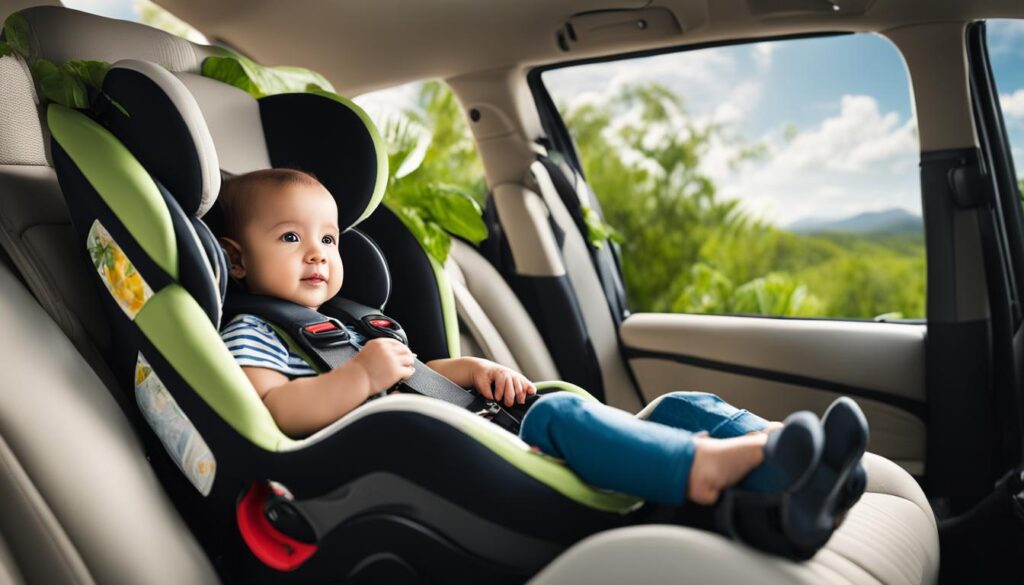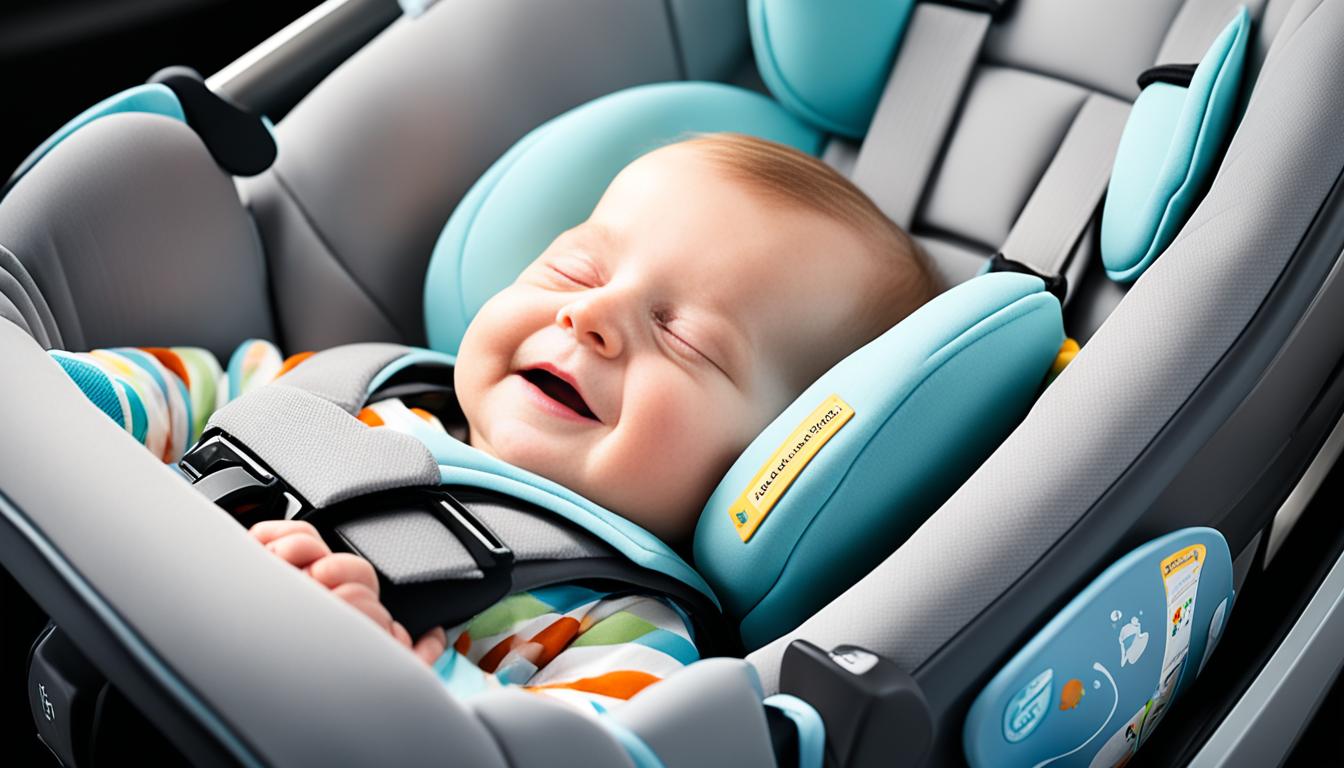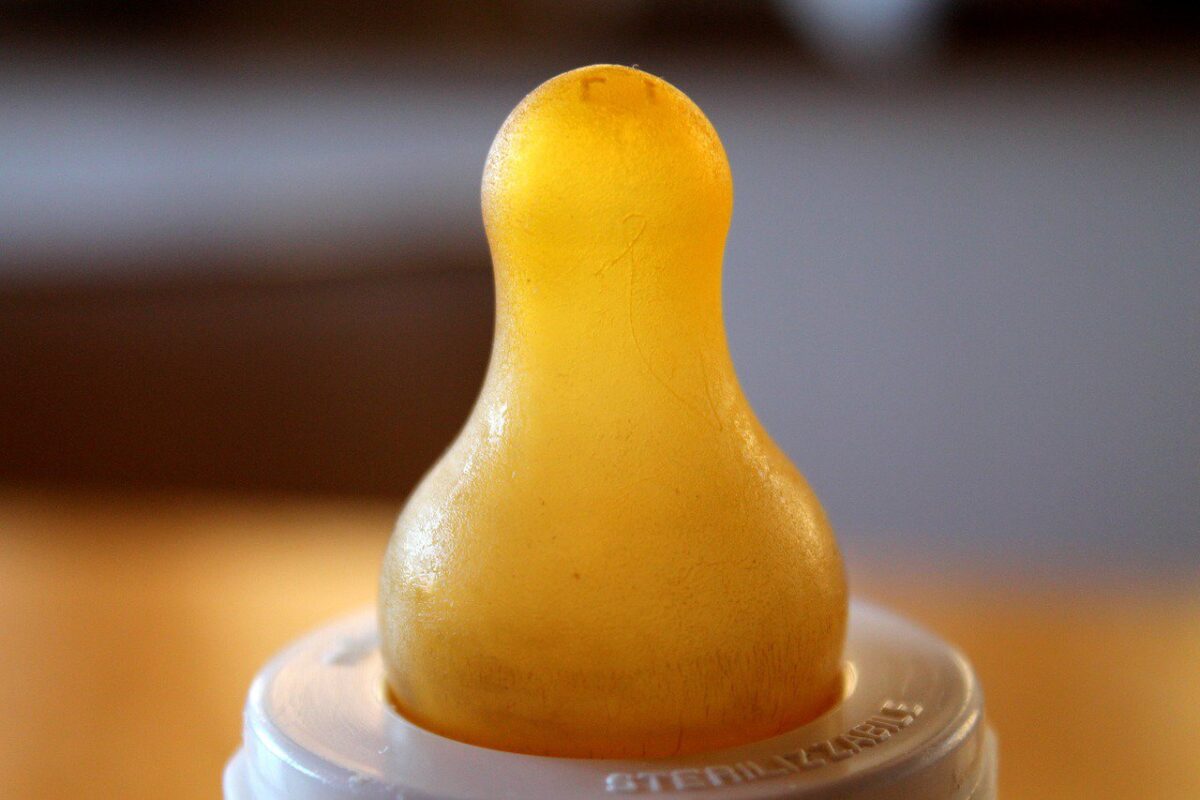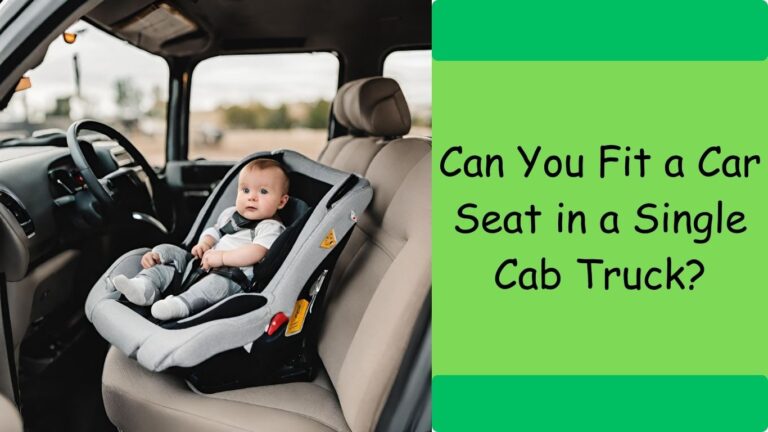Optimal Baby Weight for Forward-Facing Seats
When it comes to car seat safety for babies, there are various guidelines and recommendations to keep in mind. One common question that many parents have is, “How much should a baby weigh to face forward in a car seat?” It’s a question that may challenge some common beliefs and evoke curiosity about the safety and well-being of their little one while on the road. Let’s dive into this topic to understand the optimal baby weight for forward-facing seats and ensure that we are making informed decisions for our child’s safety.
Why Rear-Facing is Recommended
Rear-facing car seats are highly recommended by experts due to the numerous benefits they offer, especially for children aged two and under. Studies consistently show that rear-facing car seats provide better protection, reducing the risk of injuries to the head, spine, and other body parts compared to forward-facing seats.
When children ride in rear-facing car seats, their head, neck, and spine are well-supported, and the car seat absorbs crash forces, minimizing the impact on their fragile bodies. This protection is particularly important during rear-end collisions, which account for a significant percentage of traffic accidents.
“Studies consistently demonstrate fewer injuries to all body parts, including the head and spine, when children ride rear-facing compared to forward-facing.”
Rear-facing car seats are specifically designed to better protect the spine, reducing the risk of neck and spinal injuries. By providing optimal support and cushioning, rear-facing seats offer enhanced safety and peace of mind for parents.
Therefore, it is crucial to follow the recommendations of experts and keep children in rear-facing car seats for as long as possible, following the height and weight limits set by the car seat manufacturer. By doing so, parents can ensure the highest level of safety for their little ones while on the road.
The Importance of Rear-Facing Car Seats:
- Reduced risk of head and spinal injuries
- Superior protection during rear-end collisions
- Proper support for the child’s head, neck, and spine
- Minimized impact on the child’s fragile body
Car Seat Guidelines for Facing Forward Based on Weight
When it comes to transitioning your baby to a forward-facing car seat, the decision should be based on their weight and the guidelines provided by the car seat manufacturer. Most convertible car seats have higher weight limits for rear-facing, allowing children to remain in this position for an extended period of time.
Once your child outgrows the weight limit for their rear-facing car seat, it’s time to switch to a forward-facing car seat with a harness and tether. It’s important to note that age alone is not the determining factor for when a child can face forward in a car seat; instead, weight plays a significant role.
To ensure your child’s safety, always refer to the specific guidelines provided by the car seat manufacturer. Each car seat has its own weight limit for forward-facing, and it’s crucial to follow these guidelines to protect your child in case of an accident.
| Car Seat Model | Weight Limit for Rear-Facing | Weight Limit for Forward-Facing |
|---|---|---|
| Brand A Convertible Seat | 5-40 lbs | 20-65 lbs |
| Brand B Convertible Seat | 5-50 lbs | 20-70 lbs |
| Brand C Convertible Seat | 5-45 lbs | 20-65 lbs |
Table represents examples of weight guidelines provided by different car seat manufacturers. Always refer to the specific guidelines provided by the car seat manufacturer for your particular model.
By following the appropriate weight guidelines and transitioning your child to a forward-facing car seat at the right time, you can ensure their safety and provide them with the necessary protection during car rides.
How to Choose the Right Car Seat
When it’s time for a new car seat, it’s important to choose the right one for your child’s needs. There are several factors to consider to ensure the safety and comfort of your little one.
Determining Factors
First, take into account the age and size of your child. Car seats are designed with specific weight and height limits, so it’s essential to choose one that aligns with your child’s measurements.
Second, consider the type of car seat that fits in your vehicle. There are various options available, including infant car seats, convertible car seats, and booster seats. Each has its own features and advantages, so it’s crucial to select the one that best suits your child’s stage of development and your vehicle.
Finally, pay close attention to the height and weight limits specified by the car seat manufacturer. These guidelines ensure that your child is safely secured in the seat and provide the optimal level of protection.
Seeking Expert Advice
Choosing the right car seat can be overwhelming, given the wide range of options available in the market. To make an informed decision, consult a car seat buyers guide. These resources provide detailed information, comparisons, and reviews to help you understand the features and benefits of different car seat models.
In addition to the buyers guide, it’s always a good idea to talk to your pediatrician. Pediatricians are knowledgeable about car seat safety and can offer personalized recommendations based on your child’s specific needs and circumstances.
Proper Installation is Key
Installing the car seat correctly is essential for your child’s safety. Follow the manufacturer’s instructions carefully, taking note of any specific installation requirements. If needed, don’t hesitate to seek assistance from a professional car seat technician. They can ensure that the seat is installed securely in your vehicle and provide guidance on proper usage.
By considering these factors and seeking expert advice, you can choose the right car seat that meets your child’s needs for safety and comfort. Remember, selecting the right car seat is crucial for keeping your little one protected during every ride.
Safety Precautions for Forward-Facing Car Seats
When transitioning your child to a forward-facing car seat, it’s crucial to prioritize their safety by following these important precautions:
- Ensure Proper Installation: Make sure the forward-facing car seat is securely installed in the vehicle, using either the vehicle’s seat belt or the LATCH system. The car seat should be tightly anchored to prevent excessive movement during a collision.
- Secure the Seat Tether: If your car seat comes with a tether, attach it to the designated anchor point in the vehicle. The tether provides an additional layer of stability and prevents the car seat from rotating forward in the event of a crash.
- Position the Car Seat in the Middle: Whenever possible, place the forward-facing seat in the middle of the back seat. This positioning offers the greatest protection as it minimizes the risk of side impacts. In case of a collision, the middle back seat is considered the safest spot in the vehicle.
It’s highly recommended to have the car seat installation checked by a trained professional at a local fire or police station. They can verify that the car seat is correctly installed and offer guidance on proper usage. Remember, correctly securing your child’s forward-facing car seat is essential for their safety on the road.
| Forward-Facing Car Seat Safety Precautions | Why it’s Important |
|---|---|
| Proper installation | Prevents the car seat from shifting during a collision |
| Securing the seat tether | Reduces the risk of the car seat rotating forward |
| Positioning the car seat in the middle | Offers protection from side impacts |
The Importance of Rear-Facing Car Seats for Infants

When it comes to car seat safety for infants, rear-facing is paramount. As a parent, I understand the need to prioritize the well-being of our little ones, and that starts with choosing the right car seat. The American Academy of Pediatrics (AAP) recommends that infants ride rear-facing as long as possible, until they reach the highest weight or height limit allowed by their car seat manufacturer.
Why should infants ride rear-facing? Well, it all comes down to protecting their vulnerable bodies in the event of a collision. Rear-facing car seats are specifically designed to support and cradle the head, neck, and spine of infants. This positioning helps distribute the force of impact over a larger area, reducing the risk of severe injuries.
So, what does this mean for you as a parent? It means following the guidelines set by car seat manufacturers and keeping your infant in a rear-facing car seat until they outgrow the weight and height limits specified for rear-facing usage. By doing so, you’re providing them with the optimal safety and protection that they need.
“Rear-facing car seats are specifically designed to support and cradle the head, neck, and spine of infants, reducing the risk of severe injuries.”
While it may be tempting to switch your child to a forward-facing seat as they grow, it’s important to remember that their safety should always come first. The AAP emphasizes that the longer a child can stay rear-facing, the better. So, let’s prioritize their safety by keeping them in a rear-facing car seat until they are ready to transition to a forward-facing one.
As a parent, you play a crucial role in ensuring your child’s safety on the road. By understanding the importance of rear-facing car seats for infants and following the guidelines, you’re taking a significant step towards protecting your child from the potential dangers of car accidents.
Benefits of Extended Rear-Facing Car Seats
Extended rear-facing car seats offer a range of advantages for your child’s safety and well-being. By keeping your child in a rear-facing position for a longer period of time, you provide them with enhanced protection for their head, neck, and spine.
One of the key benefits of extended rear-facing car seats is the higher weight and height limits they offer. This allows your child to remain in the safer rear-facing position for an extended period, reducing the risk of severe injuries in the event of a crash.
Not only do extended rear-facing car seats provide added protection, but they also offer increased comfort for your child. These seats are designed to support their growing bodies and provide optimal positioning for a more comfortable ride.
When choosing a car seat, it is highly recommended to opt for a convertible car seat with extended rear-facing capabilities. This type of car seat can accommodate your child’s growth and keep them rear-facing until they reach the maximum weight and height limits specified by the car seat manufacturer.
Remember, the safety of your child is paramount, and extended rear-facing car seats play a crucial role in providing the highest level of protection during car journeys.
| Benefits of Extended Rear-Facing Car Seats |
|---|
| Enhanced protection for head, neck, and spine |
| Reduced risk of severe injuries in a crash |
| Higher weight and height limits for extended use |
| Increased comfort for your child |
| Convertible car seats offer flexibility and longevity |
Common Misconceptions about Forward-Facing Car Seats
Many parents have misconceptions when it comes to transitioning their child to a forward-facing car seat. Let’s debunk some of these car seat myths:
Myth 1: Once my child’s legs touch the back seat, they can face forward
False! The length of your child’s legs is not an indicator of when they should switch to a forward-facing car seat. The main factor to consider is their weight and height in relation to the car seat manufacturer’s guidelines. It’s crucial to prioritize your child’s safety and wait until they outgrow their rear-facing car seat based on the specified limits.
Myth 2: If my child seems uncomfortable in the rear-facing position, it’s time to face forward
Not necessarily! It’s common for children to squirm or voice their discontent in any car seat, regardless of the position. However, discomfort alone isn’t a valid reason to transition to a forward-facing seat prematurely. Rear-facing car seats provide superior protection for young children, especially in the event of a crash. It’s important to prioritize their safety over temporary discomfort.
Myth 3: Age alone determines when my child can face forward
Wrong! Age is not the sole determining factor for transitioning your child to a forward-facing car seat. Guidelines provided by car seat manufacturers are based on weight and height limits. These limits ensure that your child is adequately protected and reduce the risk of severe injuries in the event of an accident. Always refer to the specific guidelines provided by the car seat manufacturer, rather than relying solely on age.
It’s crucial to be well-informed and understand the recommendations set forth by car seat safety experts. By following the guidelines, you can ensure the optimal safety of your child during car journeys.
Here’s a Recap of the Common Misconceptions:
| Myth | Reality |
|---|---|
| Leg length determines when to face forward | Weight and height limits set by the car seat manufacturer should be followed |
| Discomfort in the rear-facing position is a reason to switch | Rear-facing car seats provide superior protection, even if discomfort is present |
| Age alone determines when it’s time to face forward | Weight and height limits specified by the car seat manufacturer are crucial |
Best Practices for Car Seat Safety
Ensuring the safety of your child while traveling in a car is of utmost importance. Here are some best practices and car seat installation tips to help you provide maximum protection:
- Always read the car seat manufacturer’s instructions and guidelines carefully before installing the car seat. Following the proper installation process is crucial for optimal safety.
- Tighten all anchors and straps securely to ensure the car seat is firmly in place. This includes using the tether if it is available for your specific car seat model.
- Register your car seat with the manufacturer. By doing so, you will receive important safety updates and notifications regarding any recalls that may affect your car seat.
- Regularly check your car seat for any recalls or expiration dates. It’s essential to ensure that your car seat is still safe to use and meets current safety standards.
- If you are unsure about the correct installation or usage of the car seat, it is highly recommended to seek assistance from a certified car seat technician. They can provide professional guidance and ensure that the car seat is properly installed for optimal safety.
By following these best practices, you can have peace of mind knowing that your child is protected while traveling in a car.
The Importance of the Middle Back Seat Position

The middle back seat position is considered the safest spot in the car for a car seat. Placing the car seat in this position provides extra protection for your child in the event of a crash. The middle back seat is further away from potential side impacts and provides a buffer zone between the car seat and the doors. If you have multiple children and both require car seats, it’s recommended to place the forward-facing child in the middle back seat, as they are less protected compared to the rear-facing child. This positioning helps reduce the risk of direct impact and enhances overall safety.
Consult with a Pediatrician for Personalized Guidance
If you have any questions or concerns about car seat safety, it’s advisable to consult with a pediatrician. Pediatricians have expertise in child health and safety, including car seat recommendations. They can provide personalized guidance based on your child’s age, weight, and individual needs. By seeking their advice, you can ensure that you are making informed decisions about your child’s car seat usage and following the best practices for car seat safety.
Your pediatrician will be able to address any specific concerns you may have and provide valuable recommendations for keeping your child safe on the road. They can explain the latest guidelines provided by the American Academy of Pediatrics and help you understand the importance of rear-facing car seats for infants and extended rear-facing for older children. They can also guide you on how to choose the right car seat for your child’s needs and assist with proper installation.
Consulting with a pediatrician for car seat advice can give you peace of mind knowing that you are taking the necessary steps to protect your child while traveling. Remember, car seat safety is crucial for your child’s well-being, and the guidance of a pediatrician can play a vital role in ensuring their safety on the road.
FAQ
How much should a baby weigh to face forward in a car seat?
According to the American Academy of Pediatrics, children should remain in rear-facing car seats until they have outgrown the height and weight limits of the seat. The decision to transition your baby to a forward-facing car seat should be based on their weight and the car seat manufacturer’s guidelines.
Why is rear-facing recommended for young children?
Rear-facing car seats provide better protection for young children, especially those two years old and under. Studies consistently demonstrate fewer injuries when children ride rear-facing compared to forward-facing. Rear-facing car seats support the child’s head, neck, and spine while absorbing crash forces, reducing the risk of neck and spinal injuries.
What are the car seat guidelines for facing forward based on weight?
Most convertible car seats have higher weight limits for rear-facing, allowing children to remain in that position for a longer period of time. Once your child outgrows the weight limit for their rear-facing car seat, they can switch to a forward-facing car seat with a harness and tether. Age alone is not a determining factor; always follow the specific guidelines provided by the car seat manufacturer.
How do I choose the right car seat for my child?
When choosing a car seat, consider factors such as your child’s age and size, the type of car seat that fits in your vehicle, and the height and weight limits specified by the car seat manufacturer. Consult a car seat buyers guide and talk to your pediatrician for personalized recommendations.
What safety precautions should I take when using a forward-facing car seat?
Make sure the car seat is properly installed in the vehicle, with all anchors and straps tightened, including the tether if available. Place the forward-facing seat in the middle of the back seat for extra protection. Have the car seat installation checked by a trained professional at a local fire or police station if needed.
Why are rear-facing car seats important for infants?
Rear-facing car seats are crucial for infants as they provide optimal safety. The American Academy of Pediatrics recommends that infants ride rear-facing as long as possible until they reach the highest weight or height limit allowed by their car seat manufacturer. Rear-facing car seats support the head, neck, and spine of infants, reducing the risk of severe injuries in a crash.
What are the benefits of extended rear-facing car seats?
Extended rear-facing car seats have higher weight and height limits, allowing children to remain in the safer rear-facing position for an extended period. By keeping your child rear-facing for longer, you provide enhanced protection for their head, neck, and spine, reducing the risk of severe injuries in a crash.
What are common misconceptions about forward-facing car seats?
Some parents believe that their child can face forward as soon as their legs touch the back seat or if they seem uncomfortable in the rear-facing position. However, leg length and minor discomfort are not valid reasons to transition to a forward-facing seat prematurely. Car seat safety experts recommend following the weight and height limits specified by the car seat manufacturer.
What are the best practices for car seat safety?
Always read the car seat manufacturer’s instructions carefully for proper installation. Tighten all anchors and straps securely, including the tether if available. Register your car seat with the manufacturer and regularly check for recalls or expiration dates. Seek assistance from a certified car seat technician if you’re unsure about installation or usage.
Why is the middle back seat position important for a car seat?
The middle back seat is considered the safest spot in the car for a car seat. Placing the car seat in this position provides extra protection for your child in the event of a crash, as it is further away from potential side impacts and offers a buffer zone between the car seat and the doors.
Should I consult with a pediatrician for car seat advice?
Yes, consulting with a pediatrician is advisable for personalized guidance. Pediatricians have expertise in child health and safety, including car seat recommendations. They can provide individualized advice based on your child’s age, weight, and specific needs, helping you make informed decisions about car seat usage.










